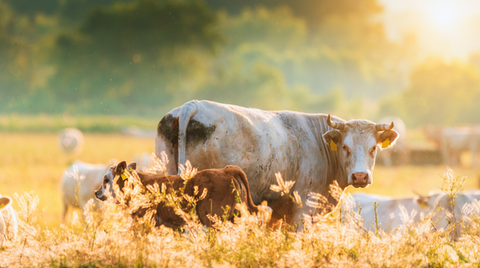Here's why leather harms people, not only animals

If you know anything about Vegan Style, you know that we love animals – it’s why we don’t make or sell any shoes made from animals. Leather is a profitable co-product of the meat and dairy industry and without skins, slaughterhouses lose profits. This is reason enough to avoid leather and opt for more ethical alternatives, but there are other justice issues related to leather production, too. Leather supply chains are full of human harms, too.
Collective Fashion Justice’s new report series, ‘Under their skin’, just released its first chapter, on ‘leather’s impact on people’. Exploring issues facing farm, slaughterhouse, tannery and other manufacturing workers, as well as Indigenous and low-income communities impacted by these supply chains, the report reveals hard truths about the human cost of leather. Here are just a few of the many reasons that leather production is bad for people, not only animals:
Leather, deforestation and Indigenous land rights
Did you know that 80% of deforestation in the Amazon is tied to cattle ranching for leather and beef? Did you know that deforestation for leather is not only an issue in the Amazon, but also in the Gran Chaco forest which spans across Paraguay, Bolivia and Argentina, as well as in the United States, and in Australia? In fact, did you know that 73% of all deforestation in Australia is tied to cattle ranching?
Deforestation is a huge risk in leather supply chains, and not only does it cause major environmental harms – like biodiversity loss, wildlife endangerment and emissions – but in many cases, this is a human rights violation, too. Indigenous people around the world are supposed to have rights which protect their sacred lands from destruction, as well as their right to live on this land. Profit-driven business like leather production violates these rights.
Farm and slaughterhouse workers facing mental struggles
Both farm and slaughterhouse workers in leather supply chains are more connected to the reality of leather as an animals’ skin than most consumers are. In many cases, farm workers routinely mutilate animals like cows, branding them, dehorning them, even castrating them without pain relief. Eventually, these workers send these animals to slaughter, too.
Jay Wilde, a cattle farmer featured in the short film ‘73 Cows’, said that sending the cows he had come to know to their slaughter was ‘soul destroying’, while an anonymous farm worker from a Sentient investigation said ‘I have to switch my love for animals a bit off, you have to if you work here. I mean normally I couldn’t send an animal to death but here you have to do it’.
Slaughterhouse workers who did this job themselves are more likely to experience perpetration-induced traumatic stress, which is similar to PTSD in its symptoms, but caused by inflicting trauma and suffering on someone else. The mental harm caused by such inherently violent work is immense, and leaves many people in leather supply chains in pain. If these are not jobs we would be comfortable to do ourselves, why would we pay someone else to do them?

Tannery workers and carcinogenic chemicals
Once cows have been slaughtered and skinned, their skins must be processed. The tanning process exists to make something organic become inorganic, unable to effectively biodegrade. In order to process leather in this way, carcinogenic and toxic chemicals like chromium, formaldehyde and arsenic are used. As a result of exposure to these chemicals, tannery workers around the globe face increased cancer risks, in some cases this risk increases by as much as 50%.
While certifications like Leather Working Group claim to ensure ‘ethical leather’ (of course ignoring the animal rights issues associated with leather), their tannery certification does not ensure fair living wages for tannery workers, or proper health and safety auditing. Even in places like Italy, where leather tanneries are considered to be luxurious and of high quality, migrant workers face discrimination, injuries from using dangereous machinery, and illness caused by working with harmful chemicals, without proper safety equipment.
Environmental pollution and leather production
Perhaps unsurprisingly, the toxic waste from tanneries are as harmful to surrounding communities as they are to workers in tanneries themselves. In India, a top leather tanning country, agricultural fields are poisoned by tannery waste, as are waterways relied on for drinking and bathing. In China, which produces more leather than any other country, some villages surrounding industrial areas where tanneries are based have been referred to as ‘cancer villages’, because of the high disease rates caused by pollution.
These kinds of abhorrent environmental and human health harms are also seen surrounding slaughterhouses in leather supply chains. Both water and air pollution nearby slaughterhouses have been found to have negative health impacts, and even increase pollution-related deaths.
The people who stitch and sew leather
Of course, as with any fashion supply chain, leather is sewn into clothing, bags, shoes and accessories by people. Across the fashion industry, it’s estimated that just just 2% of these people are paid a fair, living wage. A living wage is not a luxury, but a wage which allows people to stay out of poverty, and pay for their most basic needs.
While we often hear about fast fashion brands exploiting garment workers, this kind of violation can occur in luxury leather goods supply chains, too. Brands like Burberry and Chloé have both made headlines when police found that the people making their leather bags in Italy were being paid next to nothing to do so, for example.
Doing things differently
It’s so important that the individuals – whether people or other animals – involved in making shoes, bags, accessories and clothes are considered and treated fairly.
For us, we make sure to use animal-free materials which are more transparently made by suppliers doing the right thing. No animal harm, no deforestation risks, no tanning, no farm or slaughterhouse workers, and material producers treated well. We stitch these materials into shoes with production partners that pay fairly and do not accept exploitation for the sake of profit. Unfortunately, this is rare, but it should be the norm.

Author bio: Emma Hakansson is the founding director of Collective Fashion Justice, and the author of How Veganism Can Save Us.


















Hi,
First of all – thank you for doing this. It is difficult to use or buy non-animal origin products when no there is little supply of them. Challenging the massive volume of animal made leather products is hard. I do hope if you can push to lower your prices where people who are less informed of the animal made leather industry are compelled to buy your products + be available a major retail stores. I will leave with a suggestion: a better brand name?
Leave a comment